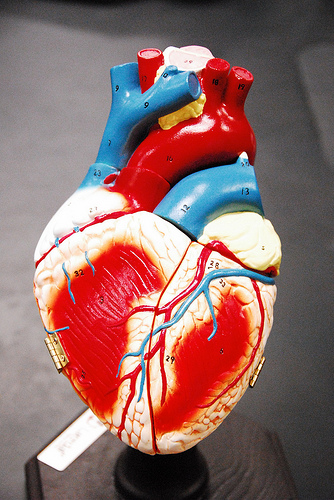
Heart attacks cause both long- and short-term problems. In the short-term, the death of cardiac muscle cells can cause a critical drop in the heart's ability to function. Over the long haul, problems arise because the damage is largely repaired by scar tissue, rather than functional muscle. For the most part, once cardiac muscle cells stop dividing (in most species, this occurs shortly after birth), they don't ever start again. That means that once they're lost in a heart attack the damage is essentially permanent.
That's why stem cells are often proposed as a treatment for damaged hearts—they provide a way to create new cardiac muscle cells, essentially by recapitulating the process that creates them as an embryo is developing. But there is a potential alternative route: restarting cell divisions within the remaining population of cardiac muscle cells. Some researchers at the University of Trieste may have found a way to do precisely that.
The team reasoned that regulatory RNAs are able to control the expression of a number of genes at once and, unlike proteins, they're a lot easier to get into living cells. So, they focused on a class of short sequences called micro-RNAs (these recently found their way into headlines due to their role in human evolution). Reasoning that some of them are probably involved in controlling cell division, the authors set out to find those by testing about as many as they could.
After searching a database for previously identified micro-RNAs, the team synthesized nearly 900 of them and inserted them into rat cardiac muscle cells that were isolated shortly after birth, when the cells still divide a bit. Once the RNA was in place, they waited for several days, then looked for indications that the cells had started dividing again. About 200 of the RNAs passed this initial test (meanwhile, over 300 RNAs were identified that seemed to shut cell division down). They were then tested on mouse cardiac cells to determine whether their effect was likely to be conserved across evolution. Only 40 of the initial 200 passed this second test.
(Given how closely related rats and mice are, this drop suggests both that some of the initial positive results were probably accidents of the experimental procedure and that regulatory RNAs evolve new functions rather quickly. This later point would be in keeping with the findings on human evolution we mentioned just above.)
Next, the authors inserted some of the most effective RNAs into cardiac muscle cells obtained from mature animals, after cell division has stopped entirely. Again, they worked. After a short delay, the cells started dividing again, slowly creating a larger population of cells. Accompanying this, the authors saw some indication that the cells had decreased their specialization and changed the expression of genes that are normally associated with mature cardiac muscle. This shouldn't be enough to cause defects in cardiac function, though, given that they still looked more like specialized cardiac muscle than the cells of a newborn heart, which clearly need to be functional.
Since everything worked well in culture, the authors tested some of the most effective RNAs in the hearts of mature rodents. Again, it seemed to work; cells started showing signs of dividing. More significantly, it worked well on a damaged heart. After subjecting mice to a procedure that mimics a cardiac infarction, the authors induced the remaining cardiac cells to express the RNA. By nearly every measure, the hearts treated with RNAs maintained more of their normal function than controls did and an examination of the hearts revealed many more cardiac muscle cells and far less scar tissue.
The researchers also looked into the changes in gene expression that accompanied this return to proliferation. As expected, they were numerous: over 1,500 genes had altered levels of expression for each of the two RNAs tested. And to a large extent, they didn't overlap, suggesting that the two regulatory RNAs exert their effects by tweaking cells in very different ways. Targeting some of these 1,500 genes individually could boost cell proliferation, but the effect wasn't as strong as when the micro-RNAs were inserted into the cells.
So, clearly the networks downstream of these RNAs are pretty complicated, and it will take some significant effort to sort out. But in the mean time, the RNAs suggest that it might be possible to develop therapies without needing to know how, precisely, they work. The relative rarity of shared function between the mouse and rat suggests that very few (if any) of the RNAs identified in this screen would work in humans. But, with the logic of the screen clearly established, then it should be possible to reproduce it in human cells (presumably those derived from stem cells).
The big hurdle then would probably be safety. It's probably impossible to target these micro-RNAs specifically to heart cells. Inducing cell division in off-target cells is never a good idea, and it's possible that in different tissue these micro-RNAs could cause completely unexpected behavior. It's also clear that the cardiac cells that do pick them up will have somewhat altered function—not necessarily a good thing during the recovery from heart problems. Given those issues, waiting for a better understanding of how these RNAs work might not be a bad thing.
Nature, 2012. DOI: 10.1038/nature11763 (About DOIs).
reader comments
29